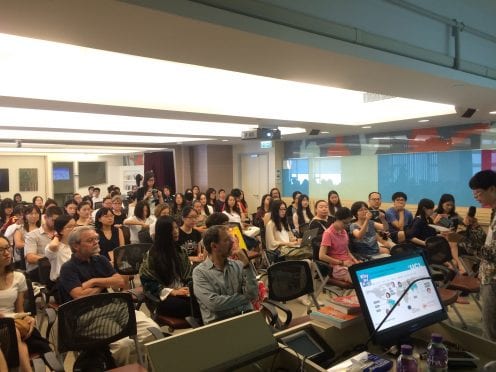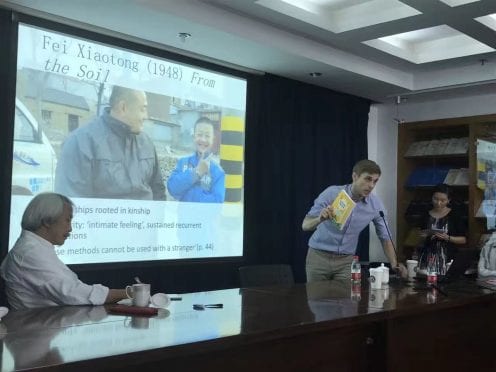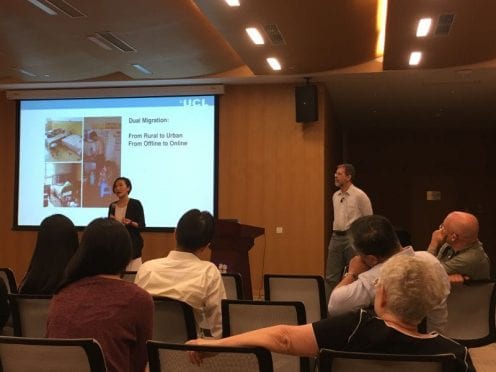Taking Why We Post to China
By Daniel Miller, on 11 October 2016

Although the Why We Post project is primarily an attempt to study the use and consequences of social media, there were other broader aims. Particularly, the hope that the project would show that while the discipline of anthropology might have originally developed for the study of tribal peoples or ethnic minorities, it is also the most effective means of understanding a global, contemporary and highly dynamic phenomenon such as social media. This would be an especially important message for the largest population of the world, China, where anthropology retains a rather conservative position within the university systems and there is a real chance that it will not survive let alone take its proper position as an effective and vanguard approach to the contemporary world.
As it happens, it is hard to think of two more effective means of making this point than our two books on social media in China. In particular, Tom McDonald’s study in rural China has a consistent narrative about how even such small rural towns are actually thoroughly imbued with digital transformations and tend to have better connectivity today than the village he comes from in Yorkshire. It is a still clearer point for Xinyuan Wang who effectively demolishes most stereotypes about Chinese society – for example the commitment to education and kin – by showing the distinctive nature of not some small exception, but the 250 million Chinese represented by her study of new factory workers. The comparison between these two books, Social Media in Rural China and Social Media in Industrial China, showcases the diversity of contemporary Chinese society and how can we better grasp the nuance and depth of a changing society through a contextualised understanding of the evolving nature of Chinese social media.

Daniel Miller at the People’s Press who are publishing Chinese versions of the books.
To share our findings we organised a trip to four major centres (Hong Kong, Guangzhou, Beijing, and Shanghai) and nine separate institutions. At a major anthropology and sociology department such as in Hong Kong University, Sun Ya-sen University in Guangzhou, and the Chinese Academy of Social Science in Beijing we could highlight our key point about this potential for anthropology itself in working with dynamic and shifting new media. But it was equally important to talk to Communication Departments such as at the Baptist University of Hong Kong, the Chinese University of HongKong, and the Communication University of China in Beijing so that students in that discipline were exposed to the potentials of ethnographic fieldwork. Our audiences ranged from arts and humanities at NYU in Shanghai, to philosophy students in Fudan University of Shanghai. We also visited the People’s Press who had published Xinyuan’s translation of the Digital Anthropology book and where I realised that my fellow authors included both the present and all the past presidents of China.

Tom McDonald delivers his talk on social media in rural China.
We carried out a live online book launch from Hong Kong (which you can watch again here) and opened an exhibition about the project at Hong Kong University where Tom now teaches. We also made sure that all the films on the Chinese version of our website were stored on UCL servers, rather than on YouTube which is blocked in China, so that students in mainland China could access them. Our trip attracted interest from Chinese local media including two of the largest Chinese online news agents, PengPai news and Tencent News, as well as the most popular English TV channel in Shanghai, Shanghai ICS, helping our message to reach more than ten thousand Chinese people within a few days.

Xinyuan Wang explains the dual migration from rural to urban and from offline to online in industrial China.
On a more personal level there were two striking responses. One was the delight of audiences when they realised that Tom would be lecturing in Chinese which was important to convince them that he could be an effective fieldworker in China. The other was the way young female students were clearly inspired by the elegant and articulate but also poignant presentation by Xinyuan and they made clear that they didn’t just want to emulate our way of working, but saw her as a model for what women in China could become in the future.
 Close
Close




